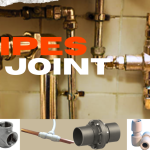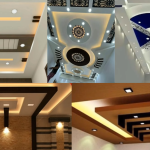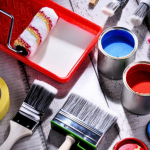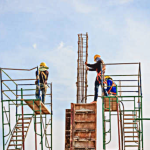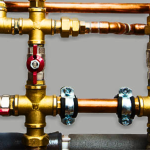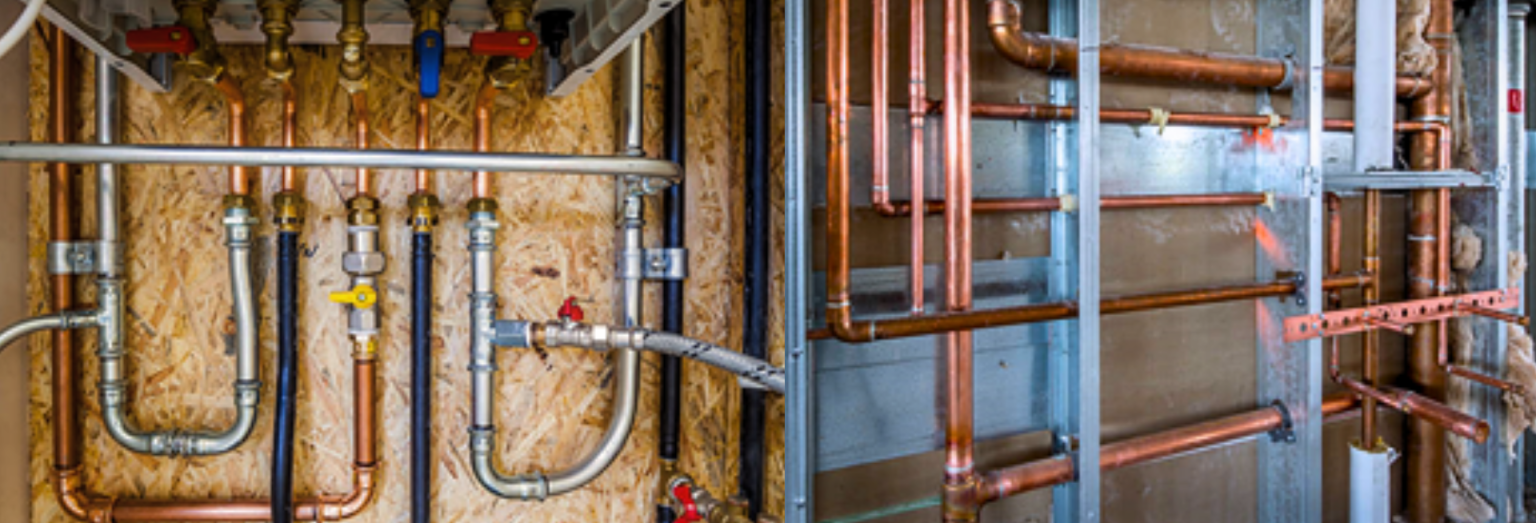
Plumbing Rough-In Process, Common Mistakes, and the Advantages of Hiring a Professional Plumber
In this article, we will explore the plumbing rough-in process and common mistakes that should be avoided to ensure the successful installation of a plumbing system in a building. The plumbing rough-in phase is a critical step in construction or renovation projects that sets the stage for a well-functioning and compliant plumbing system. By understanding the process and being aware of potential pitfalls, you can help ensure a smooth and trouble-free plumbing installation.

Plumbing Rough-In Process
The plumbing rough-in process is a critical phase in the construction or renovation of a building where the basic framework of the plumbing system is installed. It involves laying the groundwork for the plumbing system, including positioning pipes, drains, vents, and other necessary components. Here are the general steps involved in the plumbing rough-in process:
- Design and Planning. Before any work begins, plumbing professionals or engineers work with the project’s design plans to determine the layout and placement of plumbing fixtures, pipes, and other components. This planning phase is crucial to ensure that the plumbing system meets the building’s requirements and local building codes.
- Marking Fixture Location. Based on the design, plumbers mark the locations where fixtures (sinks, toilets, showers, etc.) will be installed. They ensure that these fixtures are correctly positioned and level.
- Install Main Water Supply Lines. The main water supply lines are installed during the rough-in phase. These lines are responsible for bringing potable water into the building. The materials used for these supply lines may include copper, PEX, or other approved materials, depending on local codes and project specifications.
- Drainage System Installation. Plumbers install the drainage system, which includes pipes responsible for removing wastewater and sewage from the building. Common materials used for drainage pipes include PVC, ABS (acrylonitrile-butadiene-styrene), or cast iron, depending on local regulations.
- Venting System. Proper venting is essential to prevent sewer gases from entering the building and to allow for the smooth flow of wastewater. Vent pipes are installed to connect to the drainage system and extend through the roof for proper ventilation.
- Install Shut-Off Valves. Shut-off valves are placed at key points in the plumbing system, typically near fixtures and appliances. These valves allow for easy isolation of specific areas of the plumbing system in case of maintenance or repairs.
- Connect Appliances. If the building has plumbing connections for appliances like washing machines, dishwashers, and water heaters, plumbers install the necessary supply and drain lines for these appliances during the rough-in phase.
- Inspections. Building codes typically require inspections at various stages of construction, including the plumbing rough-in phase. Local authorities or building inspectors check to ensure that the plumbing work is done in compliance with local codes and regulations.
- Pressure Testing. In some cases, plumbers may perform pressure tests to check for leaks in the water supply system. This ensures that there are no hidden issues that could lead to water damage once the building is in use.
- Final Approval. After successful inspections and testing, the plumbing rough-in phase is approved, and work can proceed to the finishing phase.
Common Mistakes to Avoid
During the plumbing rough-in process, it’s essential to avoid common mistakes to ensure that the plumbing system is installed correctly, complies with building codes, and functions effectively. Here are some common mistakes to avoid:
- Incorrect Pipe Sizing. Choosing the wrong pipe sizes for water supply and drainage can lead to inadequate water pressure, slow drainage, or even pipe clogs. Ensure that pipe sizing follows local plumbing codes and considers the expected water demand.
- Improper Pipe Sloping. Drainage pipes must be installed with the correct slope to allow wastewater to flow freely. Failing to establish the proper slope can lead to drainage problems and potential blockages.
- Inadequate Ventilation. Proper venting is critical to prevent sewer gases from entering the building and to maintain the smooth flow of wastewater. Ensure that vent pipes are correctly sized and positioned and extend through the roof as required by code.
- Incorrect Fixture Placement. Precise marking and positioning of fixtures during the rough-in phase are crucial. Mistakes in fixture placement can result in costly rework during the finishing phase.
- Improper Pipe Support. Failing to provide adequate support for pipes can lead to sagging, misalignment, and potential damage over time. Proper pipe hangers and supports are essential.
- Neglecting Accessibility. Ensure that key plumbing components, such as shut-off valves and cleanouts, are easily accessible for maintenance and repairs. Hiding them behind walls or in hard-to-reach locations can create problems down the line.
- Non-Compliant Materials. Using plumbing materials that do not meet local building codes or regulations is a significant mistake. Always use approved materials that meet code requirements.
- Skipping Inspections. Failing to have the rough-in work inspected by local authorities or building inspectors can lead to serious compliance issues. Inspections are a critical part of ensuring that the work is done correctly.
- Poor Pipe Joining. Inadequate or improper pipe joining methods, such as soldering, gluing, or sealing, can result in leaks and water damage. Follow manufacturer recommendations and industry best practices for joining pipes.
- Overcrowding of Pipes. Avoid overcrowding pipes within walls or other confined spaces. Proper spacing and clearance are essential to allow for future maintenance and to avoid complications during
- Lack of Pressure Testing. Pressure testing the water supply system is a valuable step to identify and rectify leaks or weak points before the finishing phase. Skipping this step can result in hidden issues that may cause damage after occupancy.
- Ignoring Local Codes. Ignoring or being unaware of local building codes and regulations can lead to non-compliance and potential legal and safety issues. Always adhere to the specific codes and requirements in your area.
Read Also:
The Advantages of Hiring a Professional Plumber
Hiring a professional plumber offers numerous advantages, making it a wise choice when dealing with plumbing issues or projects. Here are the key benefits of hiring a professional plumber:
- Expertise and Knowledge. Professional plumbers are trained and experienced in dealing with a wide range of plumbing issues. They have the knowledge and skills to assess problems accurately and provide effective solutions.
- Quality Workmanship. Professional plumbers are skilled at their craft and deliver high-quality work. They can ensure that installations and repairs are done correctly, reducing the risk of future issues.
- Code Compliance. Professional plumbers are well-versed in local plumbing codes and regulations. They can ensure that all work is done in compliance with these codes, preventing potential legal and safety issues.
- Proper Tools and Equipment. Professional plumbers have access to specialized tools and equipment that are necessary for plumbing tasks. This ensures that the work is performed efficiently and accurately.
- Timeliness and Efficiency. Professional plumbers won’t waste time wondering what goes where or which tool to use because they know what they are doing and how to do it. They’ll work as quickly and efficiently as possible to save you time and money.
- Warranty and Guarantees. Reputable plumbing professionals often provide warranties or guarantees on their work. This gives you peace of mind, knowing that if an issue arises after the job is completed, they will address it without additional cost to you.


